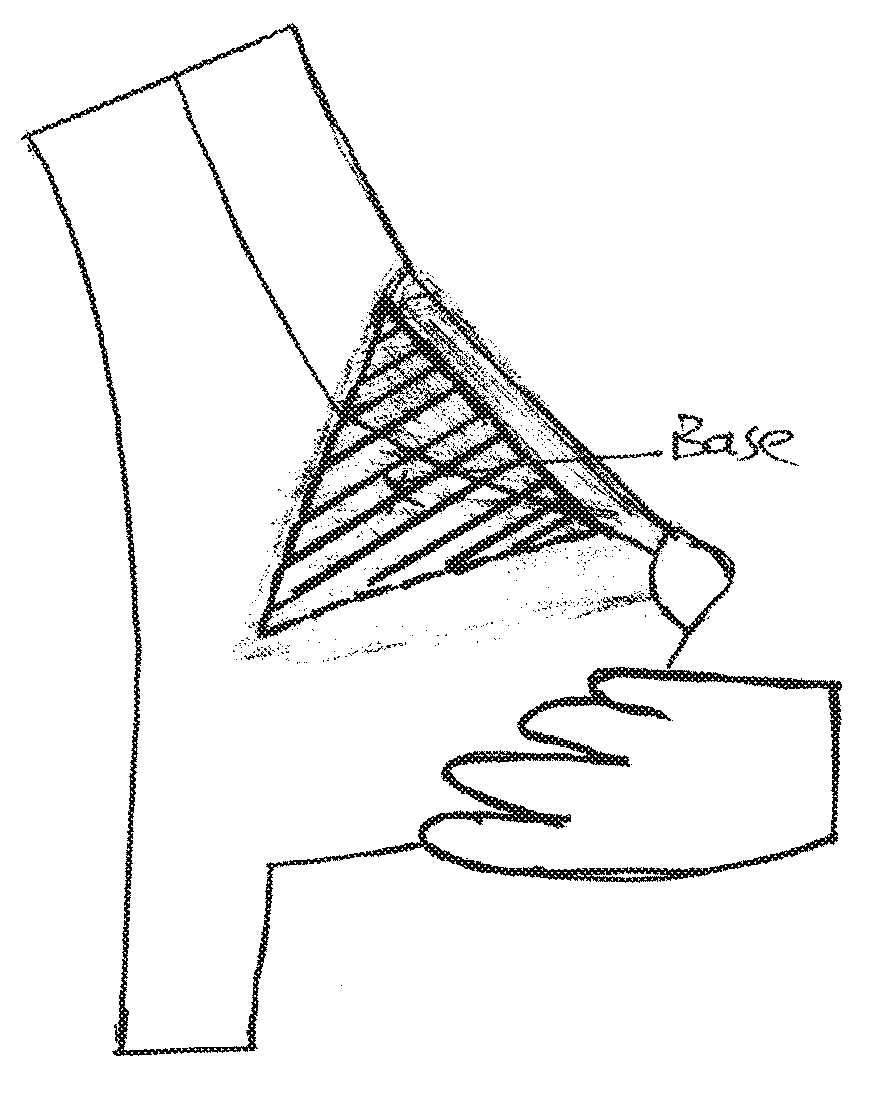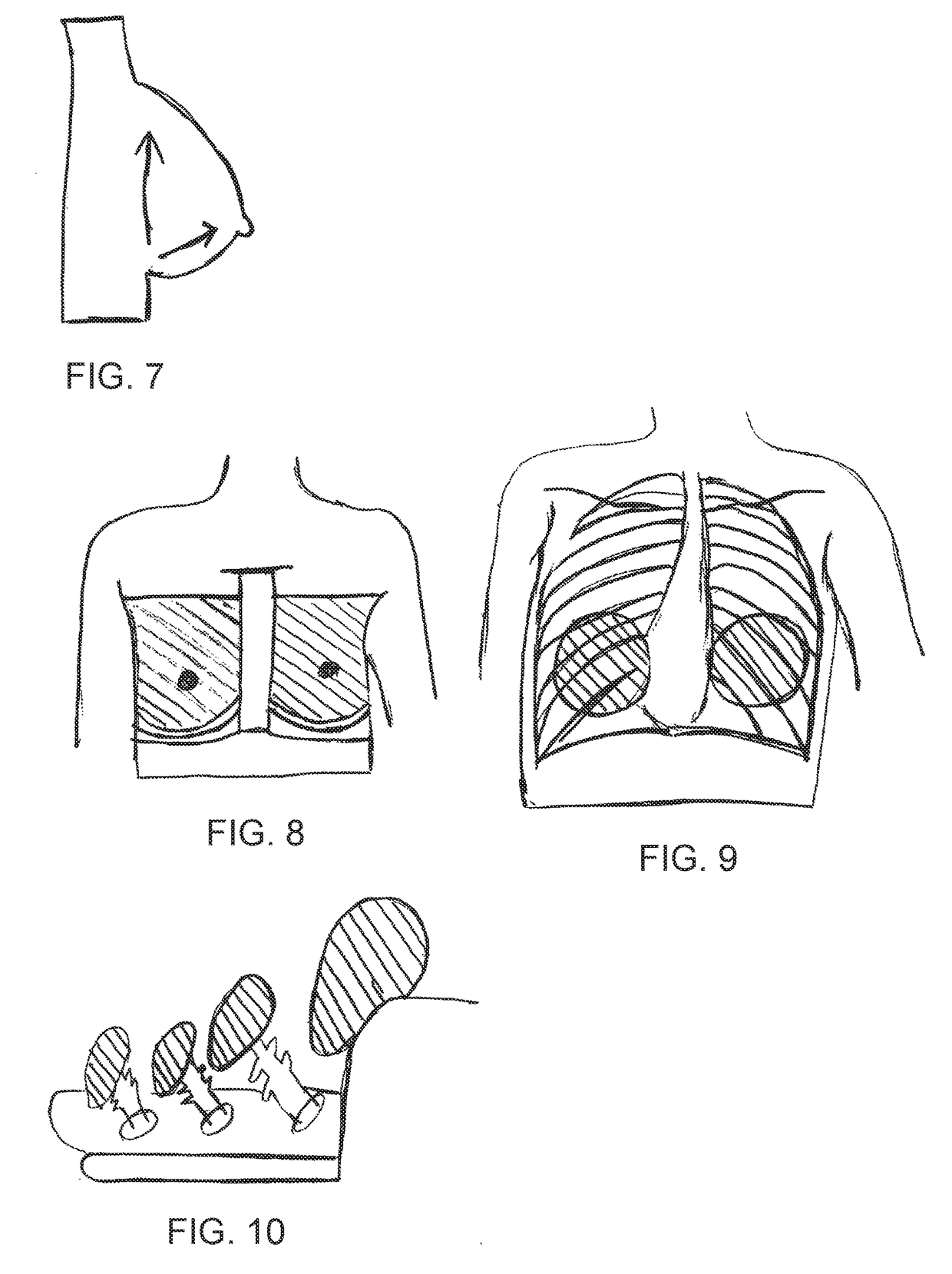Pyramid-shaped breast implant for breast augmentation and/or breast lift with a method of use and production of the same
a breast implant and a production method technology, applied in the field of human cosmetic and reconstructive breast surgery, to achieve the effect of minimizing or overcoming complications and improving the shap
- Summary
- Abstract
- Description
- Claims
- Application Information
AI Technical Summary
Benefits of technology
Problems solved by technology
Method used
Image
Examples
Embodiment Construction
[0076]The method of use of pectoral pad breast implant device consist of multiple steps:
I. Preoperative Implant Sizing:
[0077]A unique formula for calculating the volume of the Pectoral-Pad breast implant preoperative size selection, I name it as “Breast Pyramid System”. This measurement system is based on the breast triangle and breast pyramid of FIGS. 22 and 23. The formula for calculation is as follows: the surface area of the breast triangle X height of the breast pyramid. If we want to apply the upper pole volume / lower pole volume of 45 / 55 ratio guidelines, we have to measure the existing breast volume using conventional methods known in the art, then we calculate the formula as:
Upper total volume=the volume of the existing breast tissue above the nipple line+the volume of the upper portion of Pectoral-Pad implant above a line of the center of mass
Lower total volume=the volume of the existing breast tissue below the nipple line+the volume of the lower portion of Pectoral-Pad imp...
PUM
| Property | Measurement | Unit |
|---|---|---|
| cleavage angle | aaaaa | aaaaa |
| thickness | aaaaa | aaaaa |
| thickness | aaaaa | aaaaa |
Abstract
Description
Claims
Application Information
 Login to View More
Login to View More - R&D
- Intellectual Property
- Life Sciences
- Materials
- Tech Scout
- Unparalleled Data Quality
- Higher Quality Content
- 60% Fewer Hallucinations
Browse by: Latest US Patents, China's latest patents, Technical Efficacy Thesaurus, Application Domain, Technology Topic, Popular Technical Reports.
© 2025 PatSnap. All rights reserved.Legal|Privacy policy|Modern Slavery Act Transparency Statement|Sitemap|About US| Contact US: help@patsnap.com



